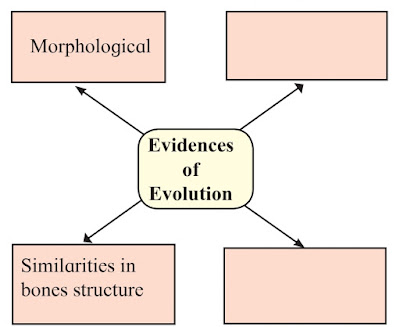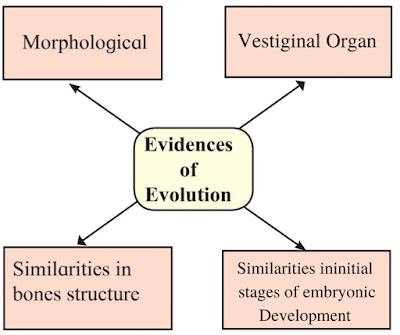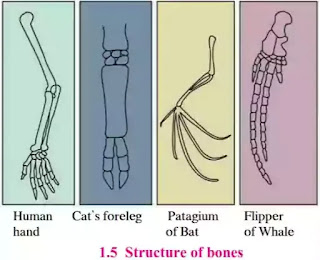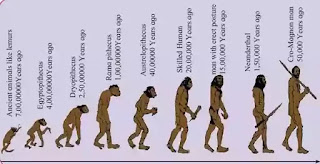Heredity and Evolution Class 10 Solution Notes
Heredity and Evolution Class 10 Solution Notes :
Students can refer to the following Heridity and evolution textbook solutions for class 10 Science provided below based on the latest curriculum and examination pattern issued by Maharashtra state board. Our subject experts have prepared these questions and answers for class 10 students. which covers all topics from your textbook so that students can assess themselves on all important topics and thoroughly prepare for their board exams.
We have provided below Heredity and evolution class 10 notes Science with answers which will help the students to go through the entire syllabus and and practice textbook questions and answers provided here with solutions. You can download in Pdf Format and score high in your board exam you should go thorough all Heredity and Evolution Class 10 solutions provided below so that you are able to get more marks in your exams.
Important points to Remember about Heredity and Evolution:
- Heredity is the transfer of biological characters from one generation to another via genes.
- Johann Gregor Mendel is pioneer of the modern genetics. Around the period of 1886, it took a long time for him to understand the conclusions of his research about heredity.
- In 1901, the reasons behind the sudden changes were understood due to the mutational theory of Hugo de Vries.
- Meanwhile in 1902, Walter and Sutton observed the paired chromosomes in the cells of grasshopper; until then it was not known to anyone.
- Research started in the direction of finding the nature of genetic material when it was proved that genes are carried via chromosomes.
- Through which 1944, trio of scientists Ostwald Avery, Mclyn McCarthy and Colin MacLeod proved that except viruses, all living organisms have DNA as genetic material.
- In 1961, the French geneticists Francois Jacob and Jack Monad proposed a model for process of protein synthesis with the help of DNA in bacterial cells. It helped to uncover the genetic codes hidden in DNA.
- The technique of recombinant DNA technology emerged which has vast scope in the field of genetic engineering.
- The science of heredity is useful for diagnosis, treatment and prevention of hereditary disorders, production of hybrid varieties of animals and plants and in industrial processes in which microbes are used.
Maharashtra State board Class 10 solution Part 2 Chapter 1 Heredity and Evolution
Question 1 : Complete the following diagram
Answer:
Question 2 . Read the following statements and justify same in your own words with the help of suitable examples.
a. Human evolution began approximately 7 crore years ago.
Answer :

- Human evolution or hominization is the slow and gradual process of biological change from the most primitive ancestors Of the human being until the appearance of our species as we know it today Homo sapiens.
- This process began approximately 5 to 7 million years ago on the African continent, with the emergence of the common ancestor between humans and chimpanzees.
- Before humans there were numerous species that are now extinct but they presented numerous physical, biological and behavioral similarities.
- Human evolution had its starting point when a population of primates in northwestern Africa divided into two independently evolved lineages: one of them remained in the trees, while the other migrated to the plains.
- Due to environmental pressures, subsequent generations of this last lineage learned to stand up on their front legs, thus releasing the hind legs that would later become hands, capable of holding.
- Thanks to the emergence of the studies of Charles Darwin and the Theory of the origin of species which came to supplant creationism or the spontaneous generation as the greatest human explanation regarding its Origin.
b. Geographical and reproductive isolation of organisms gradually leads to speciation.
Answer: Formation of new species of plants and animals is the effect of evolution. Species is the group of organisms that can produce fertile individuals through natural reproduction. Each species grows in specific geographical conditions. Their food, habitat, reproductive ability and period is different. However, genetic variation is responsible for formation of new species from earlier one. Besides, geographical and reproductive changes are also responsible. Similarly, geographical or reproductive isolation also leads to speciation.
Speciation is the process by which groups of organisms that are geographically or ecologically separated from the original population are isolated and differentiated enough to become a new species. The gene reservoir of each species maintains its integrity thanks to the existence of biological barriers that ensure reproductive isolation. Reproductive isolation mechanisms ( MAR ) prevent gene flow between populations belonging to different species. Preygotic isolation mechanisms are temporal, spatial, behavioral, or other restrictions that prevent zygote formation
c. Study of fossils is an important aspect of study of evolution.
Answer: Fossils offer palaeontological evidence for the evolutionary process.Due to some natural calamities the organisms get buried during ancient times.The impressions and remnants of such organisms remain preserved underground. The hot lava also traps some organisms or their impressions. All such formations form fossils.Study of fossils help the researcher to understand the characteristics of the organisms that existed in the past.Carbon dating method also helps in finding out exact age of the fossil. According to the structure of earth’s crust the fossils are obtained at specific depths.The oldest ones are obtained at the depth while the relatively recent ones occupy the upper surface. Thus fossils of invertebrates were seen in very old Palaeozoic era. Later were seen fossils of Pisces, Amphibia and Reptilia. The Mesozoic era was dominated by reptiles while Coenozoic era showed presence of mammals.In this way, study of fossils unfold the evolutionary secrets.
d. There is evidences of fatal science among chordates.
Answer: Fetal science or embryology is used as an evidence of evolution Comparative study of embryos in vertebrates/chordates shows that there is lot of similarity in them at the initial stages whereas this similarity decreases gradually. This similarity in the development of embryos represents common origin of organisms
3. Complete the statements by choosing correct options from bracket. (Gene, Mutation, Translocation, Transcription, Gradual development, Appendix)
a. The causality behind the sudden changes was understood due to — — principle of Hugo de Vries.
b. The proof for the fact that protein synthesis occurs through — — was given by George Beadle and Edward Tatum.
c. Transfer of information from molecule of DNA to mRNA is called as — — — process.
d. Evolution means — — — –.
e. Vestigial organ — — — present in human body is proof of evolution.
Answer :
a. The causality behind the sudden changes was understood due to mutation principle of Hugo de Vries.
b. The proof for the fact that protein synthesis occurs through gene was given by George Beadle and Edward Tatum.
c. Transfer of information from molecule of DNA to mRNA is called as transcription process.d. Evolution means gradual development.
e. Vestigial organ appendix present in human body is proof of evolution.
4. Write short notes based upon the information known to you.
a. Lamarckism
Answer : Lamarck proposed that the activities of the organisms are responsible for their evolution.Further, he said that the neck of giraffe has become too long due to browsing on leaves of tall plants by extending their neck for several generations; similarly, shoulders of the ironsmith have become very strong due to frequent hammering movements. Wings of birds like ostrich and emu have become weak due to no use. Legs of the birds like swan and duck have become useful for swimming due to living in water and snakes have lost their legs by modifications in their body for burrowing habit. All these examples are types of ‘acquired characters’ and are transferred from one to another generation. This is called as theory of inheritance of acquired characters or Lamarckism.
b. Darwin’s theory of natural selection.
Answer: Darwin had published a book titled ‘Origin of Species’. While explaining the concept, Darwin says that all the organisms reproduce prolifically. All the organisms compete with each other in a life--threatening manner. In this competition, only those organisms sustain which show the modifications essential for winning the competition. However, besides this, natural selection also plays important role because nature selects only those organisms which are fit to live and the rest perish. Sustaining and selected organisms can perform reproduction and thereby give rise to the new species with their own specific characters. Darwin’s theory of natural selection was widely accepted for long duration.
c. Embryology.
Answer: Embryology is the study of the formation and development of embryo and foetus. Embryology is used as one of the evidences of evolution. Comparative study of embryos in vertebrates shows that there is lot of similarity in them at the initial stages whereas this similarity decreases gradually. This similarity in the development of embryos represents common origin of organisms.
d. Evolution.
Answer : Evolution is the gradual change occurring in living organisms over a long duration. This is a very slow-going process through which development of organisms is achieved. All the stages in changes occurred in various components ranging from stars and planets in space to the biosphere present on the Earth should be included in the study of evolution. Formation of new species due to changes in specific characters of several generations of living organisms as a response to natural selection, is called as evolution
e. Connecting link.
5. Define heredity. Explain the mechanism of hereditary changes.
Answer: Heredity is the transfer of biological characters from one generation to another via genes.This genetic information is stored in molecules called DNA. During the process of reproduction, the child receives genetic information from both the parents in the form of DNA. 50% genetic information is passed on from the paternal DNA whereas rest 50% information is passed on by the maternal DNA. This is why a child closely resembles its parents and has traits similar to both of them. Commonly observed heritable features are curly hair, a particular type of ear lobe, hair on ears etc.
6. Define vestigial organs. Write names of some vestigial organs in human body and write the names of those animals in whom same organs are functional.
Answer : Degenerated or underdeveloped useless organs of organisms are called as vestigial organs. In living organisms, sudden development of new tissues or organs for living in changing environment is not possible. Instead, existing organs undergo gradual changes.Appendix, which is useless to human, is useful and fully functional organ in ruminants. Similarly, muscles of ear pinna, which are useless to human, are useful in monkeys for movement of ear pinna. Various vestigial organs like tail-bone (coccyx), wisdom teeth, and body hairs are present in body of human being.
7. Answer the following questions.
a. How are the hereditary changes responsible for evolution?
Answer : Heredity is the transfer of biological characters from one generation to another via genes . Heredity gives rise to variations in offspring which may or may not be beneficial to organisms. The beneficial traits help them survive and reproduce further. Thus, this is a form of natural selection. – Natural selection of variations that are inherited helps in the evolution of the species.
b. Explain the process of formation of complex proteins.
Answer : These proteins are synthesized by DNA through the RNA. This is called as ‘Central Dogma’. mRNA is produced as per the sequence of nucleotides on DNA. Only one of the two strands of DNA is used in this process. Their are three step of protein formation
- Transcription : The sequence of nucleotides in mRNA being produced is always complementary to the DNA strand used for synthesis. Besides, there is uracil in RNA instead of thymine of DNA. This process of RNA synthesis is called transcription.
- The mRNA formed in nucleus comes in cytoplasm. It brings in the coded message from DNA. The message contains the codes for amino acids. The code for each amino acid consists of three nucleotides. It is called as ‘triplet codon’.
- Translation : Each mRNA is made up of thousands of triplet codons. As per the message on mRNA, amino acids are supplied by the tRNA. For this purpose, tRNA has ‘anticodon’ having complementary sequence to the codon on mRNA. This is called as ‘translation’.
- Translocation : The amino acids brought in by tRNA are bonded together by peptide bonds with the help of rRNA. During this process, the ribosome keeps on moving from one end of mRNA to other end by the distance of one triplet codon. This is called as ‘translocation’. Such many chains come together to form complex proteins.
c. Explain the theory of evolution and mention the proof supporting it.
Answer : According to the theory of evolution, first living material was in the form of protoplasm which was formed in ocean.Gradually, it gave rise to unicellular organisms. Changes took place in these unicellular organisms which made them evolve into larger and more complex organisms. All evolutionary changes were very slow and gradual taking about 300 crore years to happen. Different types of organisms were developed as the changes and development that occurred in living organisms wefts all round and multi-dimensional. Hence, this overall process of evolution is called organizational and progressive. Variety of plants and animals developed from the ancestors having different structural and functional organization during the process of evolution.
Proof here means evidences of evolution. These evidences are as follows:
- Morphological evidences
- Anatomical evidences
- Vestigial organs
- Palaentological evidences
- Connecting links
- Embryological evidences
Answer: Remnants and impressions of organisms which get burried remain preserved underground. These are called as fossils. Study of fossils is an important aspect of study of evolution.
- Carbon consumption of animals and plants stops after death and since them, only the decaying process of C-14 occurs continuously.
- In case of dead bodies of plants and animals instead of remaining constant, the ratio between C-14 and C-12 changes continuously as C-12 is non-radioactive.
- The time passed since the death of a plant or animal can be calculated by measuring the radioactivity of C-14 and the ratio of C-14 toC-12 present in their body. This is carbon dating method. It is used in determining the age of human fossils and manuscripts.
- Once the age of fossil has been determined, it becomes easy to deduce information about other erstwhile organisms. It seem that vertebrates have been slowly originated from invertebrates.
f. Write evolutionary history of modern man.
Answer : The evolutionary history of modern man:
- Approximately 7 crore years ago, the dinosaurs disappeared completely.At that time, monkey-like animals appeared from more or less similar to the modern lemurs.
- Tail of these monkey-like animals disappeared about 4 crore years ago. Due to enlargement of brain and improvement in their hands, ape-like animals were evolved and then later they evolved into gibbon and orangutan.
- From gibbon and orangutan, gorilla and chimpanzee evolved about 2.5 crore years ago.
- About 2 crore years ago first human-like animals evolved who had erect posture and able to use their hands.
- Ramapithecus ape recorded as first human-like animal. Afterwards, this ape grown up in size and became more intelligent.
- About 20 lakh years ago skilled human developed and about 15 lakh years ago evolved human with erect posture and walking.
- Neanderthal man was considered as the first wise-man.
- About 50 thousand years ago the Cro-Magnon man evolved and afterwards, this evolution had been faster than the earlier.
Project :
1. Make a presentation on human
evolution using various computer
softwares and arrange a group
disscussion over it in the class
room.
Answer : Answer yourself



